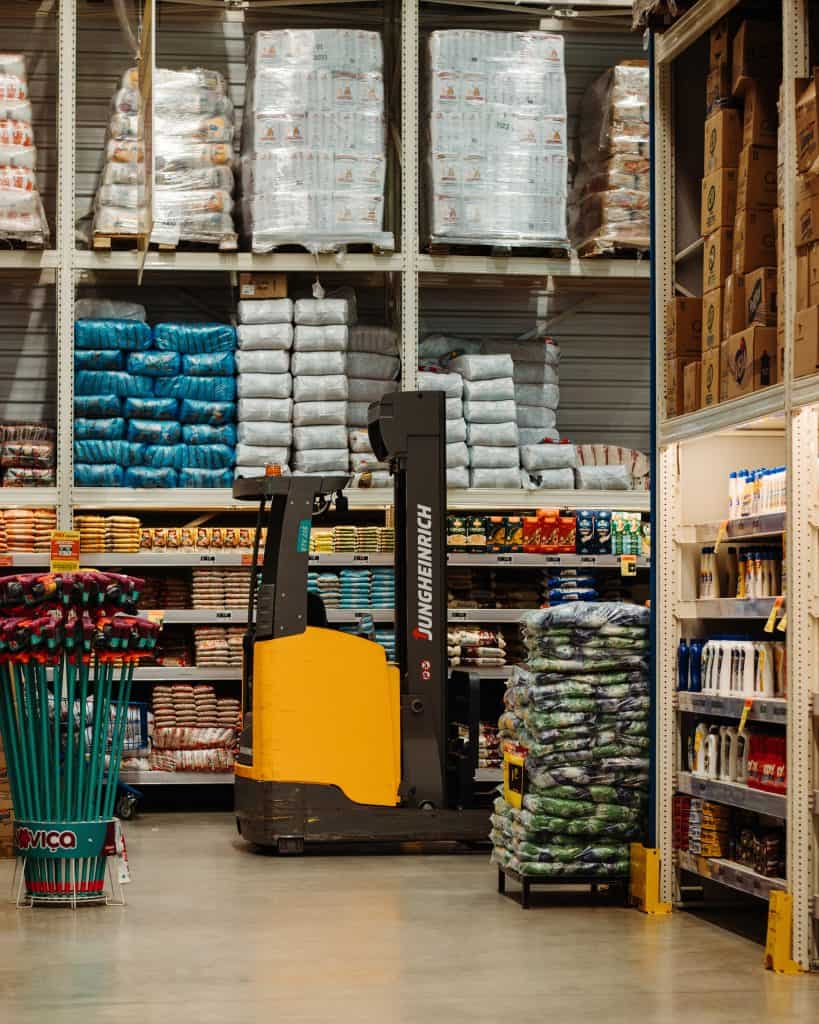Warehouse shipping might seem like a simple process, especially to those that are on the outside of the industry. But, there are many intricacies within the overall process of shipping products from point A to point B. These warehouse shipping procedures and steps are important to understand.
Without the proper procedures and steps in place for your warehouse and company, you may find that your warehouse struggles to deliver on-time deliveries. Not meeting delivery expectations is a slippery slope for a shipping company. As you begin to fall behind on one order, it’s easy for the following multiple orders to fall behind as well.
In this guide, we’re helping you understand each of the steps within warehouse shipping procedures and how you can improve on them. There are plenty of ways that you can work to make your warehouse better and become a more successful warehouse manager.
Preparing Warehouse Shipments
Before anything can be shipped, there are a number of factors that need to be addressed. But, the most important is deciding on what type of shipping material you’ll use to ship the product. Packaging materials can be difficult to choose and even more difficult for you to choose the right ones. Be sure to read this post – Packaging Materials – Types & Which To Use.
There are large differences in how you prepare a shipment, especially when you’re shipping something in a box, in an envelope, on a pallet, or in your own truck. Knowing how you’ll go about shipping different products that your company produces should be essential to your warehouse shipping procedures.
Steps to Warehouse Shipping

In all, there are only three different steps to warehouse shipping. There are far more steps involved in the process of warehouse management, from receiving a product to shipping it, but the only steps we’ll talk about in this post are the steps to warehouse shipping.
- Create and Manage Order Information
- Pick, Pack, Ship
- Shipping
Just like that, it’s as simple as 1, 2, 3. But, there is definitely a lot that could go wrong throughout the process. Nonetheless, here are the breakdowns for each of those steps.
Create and Manage Order Information
While there’s a lot of different steps within this process, the basics include gathering order information, validating addresses, confirming available inventory, combining any shipments that are headed to the same location, and preparing the order for shipment.
Pick, Pack, Ship
You may have heard the terms pick, pack, ship. It’s a simple three-step process used by almost every logistics company out there. Picking products pertains to getting ordered items off the shelves, packing is the preparation of those items in their proper packaging, and shipping is label creation. After the package or order is ready, it’s moved on to the shipping process.
Shipping the Order
Shipping is as simple as moving the order from one place to another via a parcel or courier service. If you’re a smaller company or business, you’ll likely partner with a courier service such as UPS, FedEx, or USPS. Recently, big-name companies such as Amazon have started managing their entire shipping process by having their own trucks.
Common Shipping Problems
We talked earlier about some of the issues that can arise when it comes to shipping and how efficiently an order can be moved from one place to another. Here are some common errors or problems that you’ll likely see.
- Inventory Shortages
- Storage and Picking Inefficiencies
- Cost-Related Problems (too expensive to ship)
- Human Errors
- Health and Safety Hazards
- Warehouse Layout Issues
There’s a simple solution if you’re willing to take the time and undergo the process of seeking to solve it. That’s what this post is all about. We’re here to help you solve your warehouse shipping problems in order to reach your customers more successfully.
Inventory Shortages and Storage Inefficiencies

Your warehouse needs to be efficiently run from the inside out. You won’t maintain good shipping habits and shipping times if you’re not able to keep your inventory and inventory storage processes straight.
One way to make your inventory processes more effective is to utilize an inventory management tool. Extensiv Warehouse Manager from Extensiv is one such tool that offers all kinds of benefits to its users. You’ll find it much easier to keep tracking of what inventory you have on hand, what inventory is in the shipping process, and you’ll even be able to organize your storage facility better by knowing which products are more likely to move in and out of your facility at a higher rate.
If you’re still trying to manage your inventory tracking through the use of a spreadsheet or other tool, then consider changing it up and utilizing a cloud-based inventory management software system such as Extensiv Warehouse Manager. Contact Extensiv Warehouse Manager today for a free demo.
Retrieval Inefficiencies and Human Errors
Human errors are never entirely avoidable because part of being human is making mistakes. But, that’s not to say that the severity of errors can’t be lessened, and in turn, efficiency levels increased. One of the easy ways to reduce human errors and improve retrieval inefficiencies is to ensure that you have enough employees and that your employees have a quality working environment.
Warehouse employee retention is a real issue that many warehousing companies struggle with more often than not.
Cost Related Problems
Shipping can be extremely expensive and not just because of the cost associated with postage or general shipping fees. While those do play a major role, especially when you take into account the ever-rising cost of oil that’s used to make gasoline and fuel for the planes and trucks.
Other costs can include the packaging and storage of items. Shipping becomes even more expensive if your buyers want to be able to make returns.
Another cost that isn’t often taken into account is the cost of labor. Warehouse employees do hard work and will need to be compensated fairly if you intend for them to stick around and continue working for you. In any case, they should at least be paid a competitive rate.
Health and Safety Hazards
Following all ordinances and laws will be important for keeping your company out of any health and safety issues in the future. While some hazards are hard to avoid, others can be completely avoided if you’re careful and intentional about how you set up your warehouse.
Some common warehouse accidents are as follows:
- Heavy Equipment Accidents
- Slips, Trips, and Falls
- Exposure to Chemicals
- Being Hit by Falling Objects
- Machine Entanglement
No accident is 100% preventable. That’s why they’re called accidents and not just mistakes or mess-ups, but you should be doing everything you can to prevent accidents from happening. One thing you can do is ensure that your employees are all wearing the correct safety equipment. The right shoes play a large role in preventing a lot of accidents. Hard hats, safety vests, and gloves are all good items to ensure that your warehouse employees have quick access to. For more safety tips, be sure to check out this blog post.
Layout and Design Issues
The layout and design of your warehouse will make a huge difference in your warehouse’s ability to be efficient during the shipping portion of the work you’re doing. By designing your warehouse with shipping and efficiency in mind, you’ll be able to ensure that all of your products and shipments are quickly and easily moved throughout the warehouse. Without this, you may notice your warehouse employees struggling to keep up with orders or experiencing fatigue from the long distances they’re forced to travel to pick and pack items throughout the warehouse.
All great warehouse layouts have one thing in common. The receiving lines are placed directly behind the receiving docks, where the trucks drop off inventory, and the shipping lines are placed directly behind the shipping dock. In this way, the inventory can be properly packaged and sorted before being moved to storage.
We hope you’ve enjoyed this guide and that you’re able to improve your warehouse shipping procedures. For more information on warehouse management and how to improve your warehouse processes, be sure to check out our blog. We are continually adding more content and trying to be as useful as possible to the warehouse management community. And be sure to reach out to Extensiv for a free demo of our inventory management solution, Extensiv Warehouse Manager.







